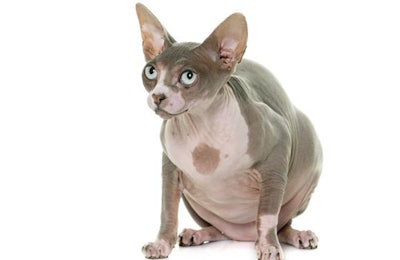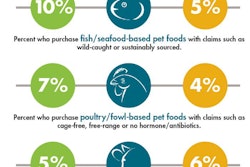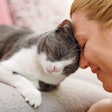
On October 12, the Association for Pet Obesity Prevention (APOP) marked the tenth anniversary of its annual dog and cat obesity survey. The founder of APOP, Ernie Ward, DVM, pulled from his decade of observations to suggest that pet food companies can gain veterinarians’ confidence and subsequent recommendations to consumers by informing those vets about innovations in pet food ingredients and processing, such as high pressure pasteurization of raw food.
“If the pet food industry keeps vets informed about new products, the vets can recommend them,” Ward told Petfood Industry. “When someone comes in with a brand that the vet's never heard of, it might be the best on the planet, but if the vet hasn’t heard of it or doesn’t understand the manufacturing process, they may dismiss it.”
Keeping vets in the loop can increase pet food brand recognition and trust, he said, which could lead to increased endorsement of those weigh-management and therapeutic pet foods to patients’ owners.
“What veterinarians have traditionally done is be loyal to a handful of brands, but I think those days are largely gone,” said Ward.
Better pet food, yet rising dog and cat obesity
Over the past decade, Ward says he’s witnessed a dramatic improvement in the quality and safety of pet foods. He believes that pet food today is better than it’s ever been.
“We are in a renaissance of pet food,” Ward told Petfood Industry. “When it comes to weight-loss, we have better choices and more creative formulations than I’ve ever imagined would be in the marketplace.”
Yet, even with these healthy, weight-management pet food options, dog and cat obesity rates continue to increase.
“The most startling and concerning finding, over the past decades, is the increase in the number of obese pets, specifically cats,” said Ward. “It’s not that the overall figure has dramatically increased, but the number of obese dogs and cats has really outpaced the overweight. We’re seeing a higher percentage of clinically obese pets.”
Although Ward believes the pet food industry currently runs great obesity treatment and prevention campaigns, he calls for yet more outreach from the pet food industry on the consequences of poor nutritional habits. The veterinary profession needs help telling people that food choice is the most important health decision a pet owner makes every day, he said.
Ward said pet food labels and nutrition instruction could be made clearer to help pet owners understand their dogs and cats nutritional needs.
Pet food industry fights dog and cat obesity
Veterinarians and scientists working inside the pet industry may agree with Ward. Jennifer Adolphe, PhD, RD, senior nutritionist for Petcurean, noted that labeling restrictions can hinder the amount of nutrition advice pet food companies can put on their packaging. However, she and Petcurean have found other ways to promote obesity prevention and treatment.
“We use various formats to try and get that message to our consumers,” said Adolphe. “Through various media outlets, articles on our website ... we have on our YouTube channel a series of short videos called Health Bites, and one of those is about obesity and how to identify it and manage it.”
Interviews with reporters and mass media outlets can be an opportunity to educate the public on cat and dog obesity, said Adolphe. Whenever possible in an interview, she tries to work in her advice about managing body weight in pets.
For example, one of the key techniques she recommends to pet owners is to use a kitchen scale to measure the amount they feed their pets, as opposed to using a volumetric measurement. Weighing pet food is more accurate and can help pet food consumers as they adjust feeding recommendations to find the ideal quantity for their pets to maintain health, but avoid obesity.
For the food being weighed, Petcurean offers weight-management pet food with recipes formulated for various sizes and ages of dog.

















